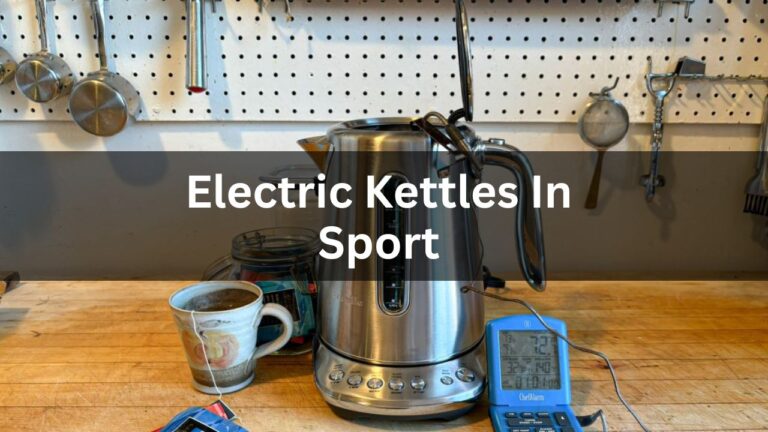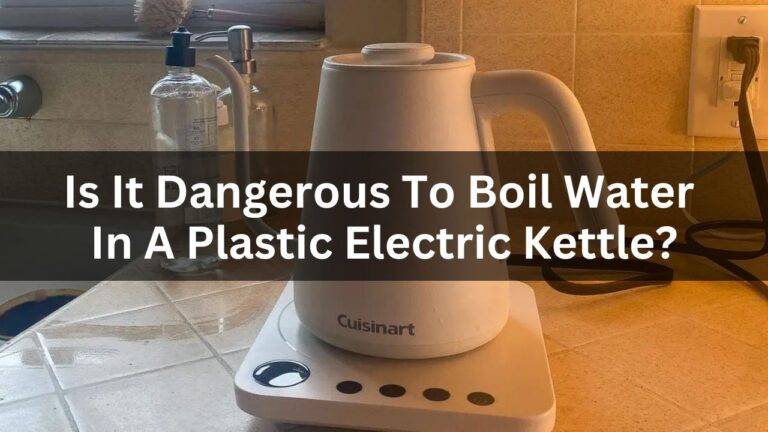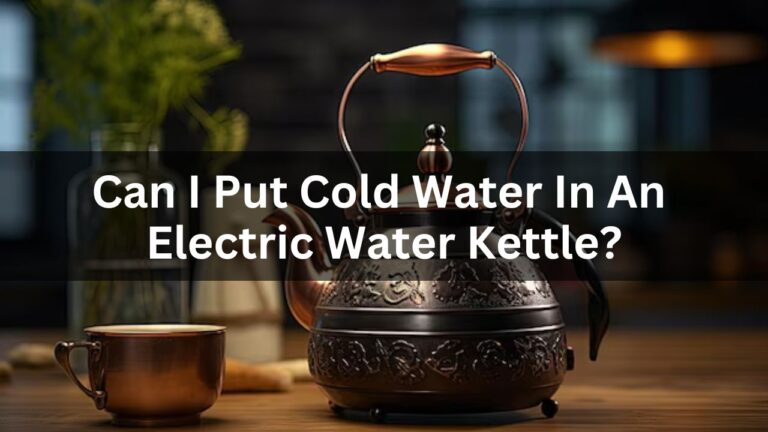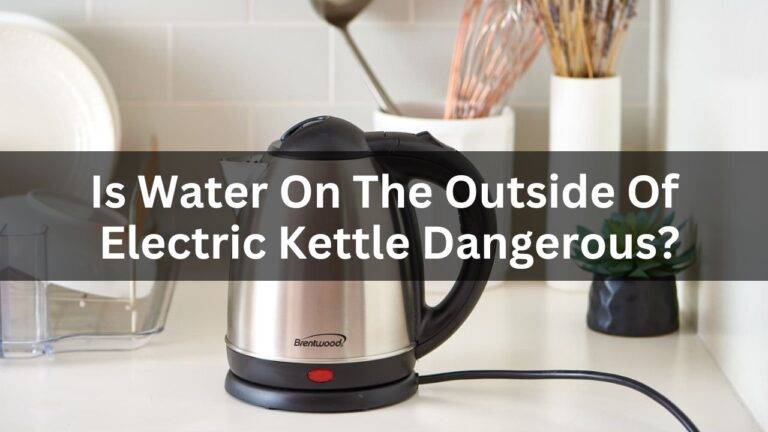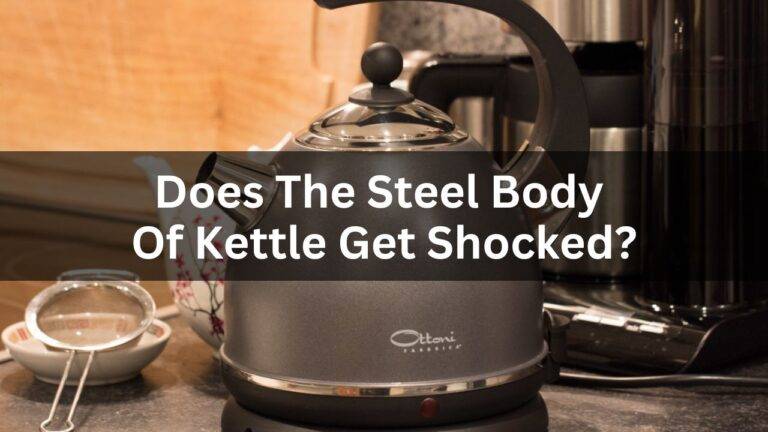Is It Safe To Leave Tea Kettle Plugged In?
Do you leave the tea kettle plugged in like many other appliances? Today many people do not plug out many appliances after use. There is no doubt that it makes the work very easy.
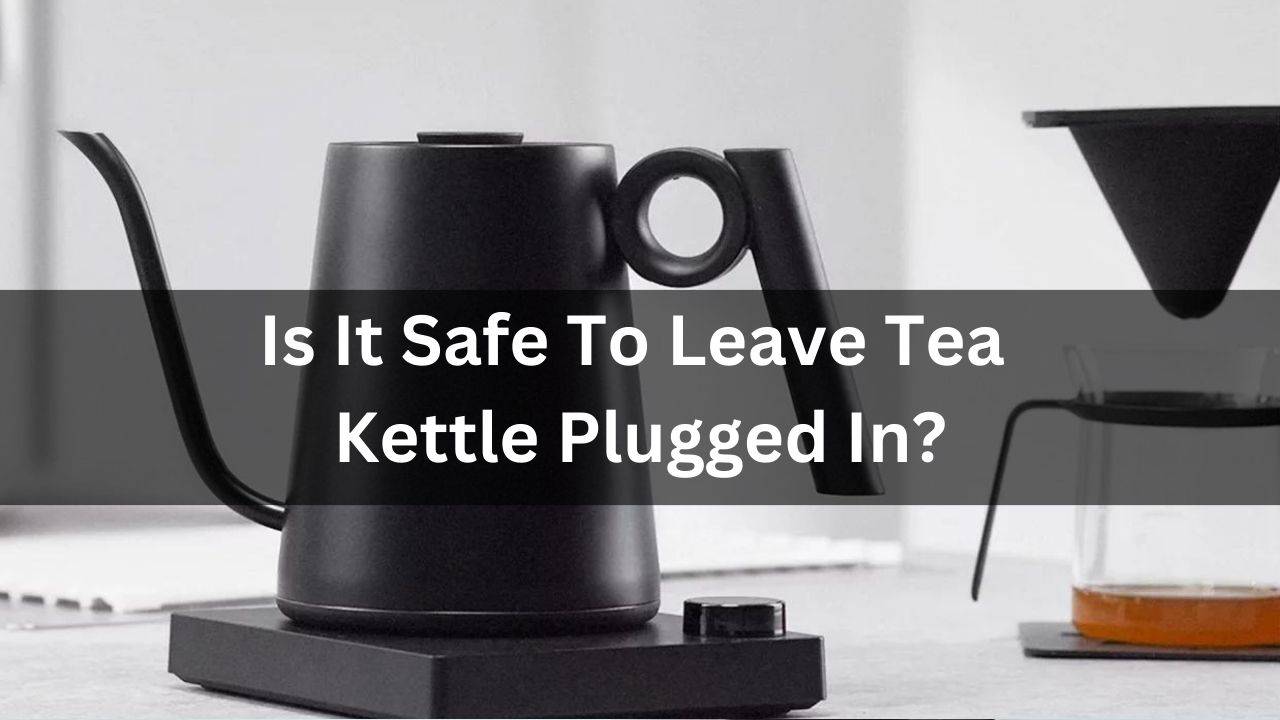
Do you leave the tea kettle plugged in like many other appliances? Today many people do not plug out many appliances after use. There is no doubt that it makes the work very easy.
We are using these appliances many times so we don’t need to plug them in again and again. However, some studies show that plugged-in appliances can also use 10% electricity without turning on.
Sometimes it can be dangerous for you in case the switch is left on. The new appliances have the capability to tackle all apparent forms of misuse.
Thus there is virtually little risk associated with leaving the kettle plugged in, on, or off the base. Boiling a liter or more water in it creates more danger.
If you don’t know about whether you should plug in or plug out without use. This article can definitely help you.
Contents
Which Kettles Can Be Plugged In?
It’s not considered healthy to keep the kettle plugged in. When you plug out the kettle after turning off the switch, there are fewer chances of accidentally heating the kettle. So, experts advise to unplug it after use.
You can keep your kettle plugin in case it has an on-off switch. Some modern kettles have the ability to turn off automatically. They shut down the heating when the temperature exceeds the specific limit.
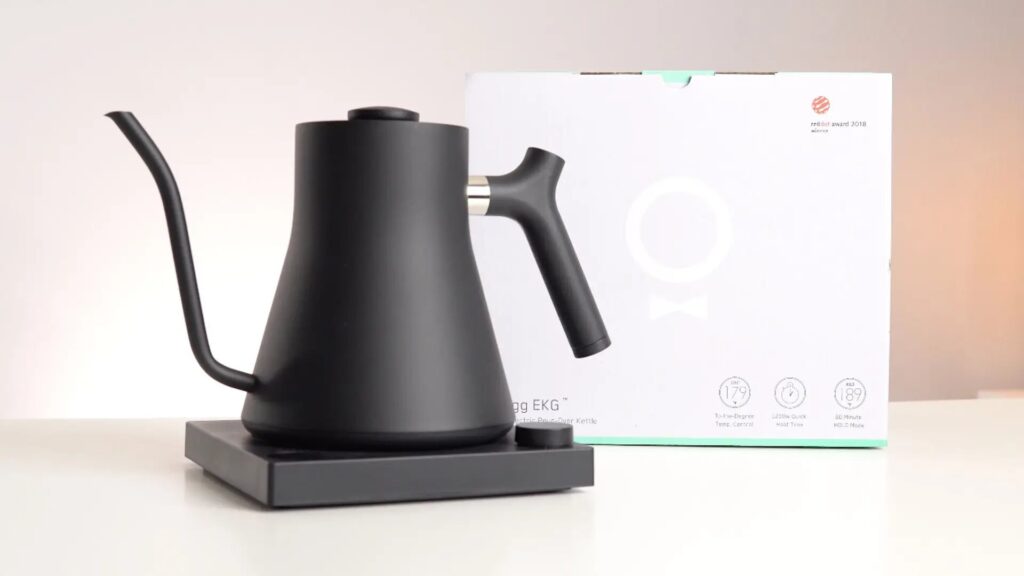
chenaimalaysia
There’s no great deal about plugging in these kettles. In case you accidentally left it on the kettle, it automatically turns off. So, there is less risk in this case.
If you also forget to plug out appliances after using them, then you should buy the modern kettles. Their automatically turning-off system can save them from overheating.[1]
Also Read: Do You Use Bottled Water To Boil The Kettle?
Does a Plug-In Kettle Use Electricity?
The kettle only uses energy when the switch is on. Only plugging never consumes any power. It’s the misconception that the kettle uses electricity in case it is only a plugin, not in use.
You already know that current passes in a closed circuit. Switch activation completes the circuit. Therefore, you shouldn’t worry about the power consumption of only plugged-in appliances.
We don’t plug out many appliances after use like microwave, washing machine, kettle, iron, etc. Call it carelessness or laziness.
This is the fact that we want to avoid having to repeatedly plugin appliances by doing this. We must deal with major serious consequences whenever we forget to plug it out and switch it off.[2]
Also Read: Is It Dangerous To Use A Rusty Kettle?
What Happens If A Kettle Is Left On?
Due to some mistakes, we have to suffer heavy losses and one of them is this mistake. This can expose you to hazards such as kettle failure, causing the kettle to catch fire and release toxic fumes.
Toxic Fumes:
Plastic makes up the majority of the kettle’s exterior. This plastic can tolerate heat up to a specific range. Increased temperature can start burning. It releases toxic fumes while burning.
Kettle Failure:
Boiling the kettle for too long without any reason can damage your kettle. Keeping the kettle full of water can reduce this risk. Whenever you leave the empty kettle on the fire, it could be very dangerous. Because heat slowly starts melting your kettle’s plastic.
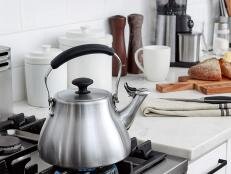
Fire Hazard:
In case, you left the empty kettle on fire for a night then it starts melting. And eventually catches fire. It can set your kitchen on fire.[3]
Also Read: Is It Dangerous To Boil Water In A Plastic Electric Kettle?
Can You Plug A Kettle In An Extension Cord?
You can safely use a kettle with an extension cord. The extension cord must have the ability to bear the load of a kettle. Kettles work at almost 13 amperes.
An extension cord has the ability to tolerate below 15 amperes. It can trip due to overloading when the current load exceeds 15 amperes. High-voltage appliances cannot be used in the same cord for this reason.
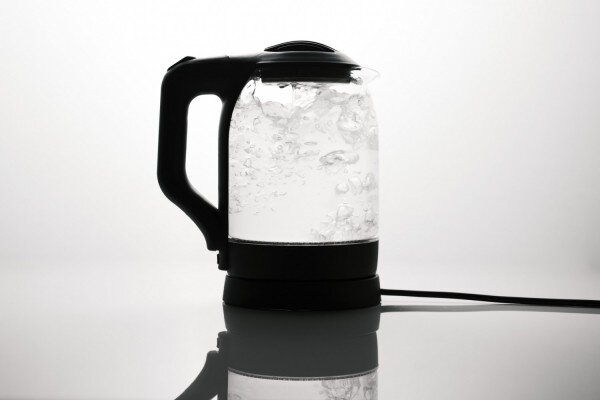
Microwave, kettle, and iron are high-voltage appliances. In case you put all these appliances in the same cord. It can catch fire due to overloading.
As we know overloading causes overheating which sets the cord on fire.[4]
Also Read: Should You Leave Water In A Kettle Overnight?
What Are The Safety Features In New Kettles?
New electric kettles can automatically shut off in two cases.
Temperature exceeds: When its temperature exceeds, it automatically shuts off. This ability saves us from many accidents. Their old version can catch fire due to overheating.
Put Water: It automatically shuts off in the absence of water. It is necessary to put water in the kettle before turning it on.
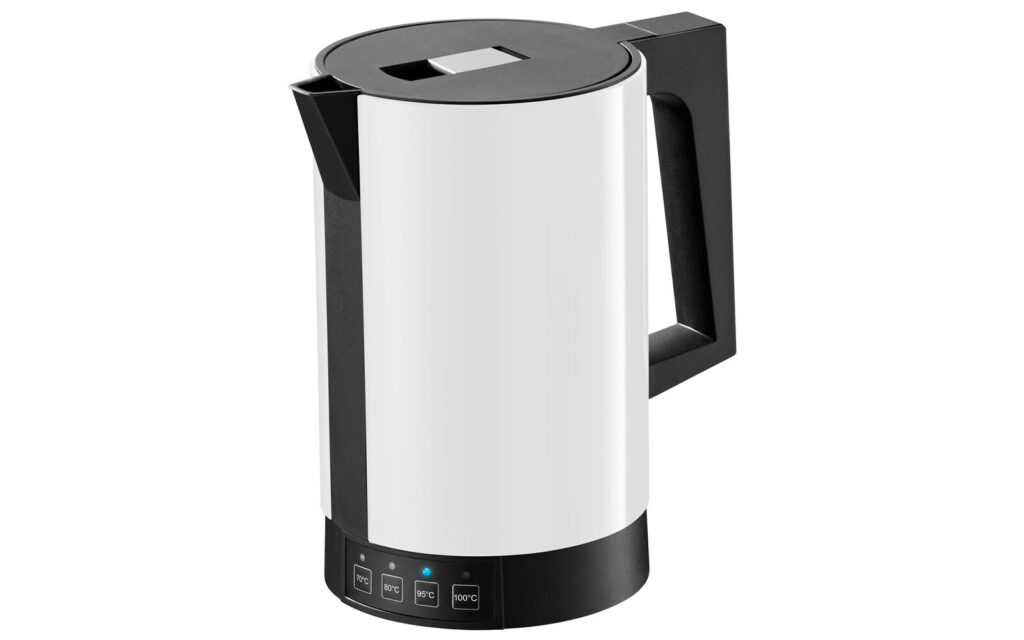
Heating the empty kettle can burn the heating element of it. Additionally, it also releases toxic fumes.
You shouldn’t show any carelessness in dealing with electric appliances. They consist of a sensor that senses the temperature limit and the presence of water. This is the plus point of modern electric kettles.[5]
Also Read: Can I Have A Kettle In My University Room?
Precautions for kettle users:
Never Leave Water In The Kettle:
If you want your kettle to last longer, always drain it after use. Because stagnant water in it forms the limescale layer. Which is considered not good for it.
Don’t Heat The Empty Kettle:
Heating the empty kettle can destroy the heating element of the kettle. It also melts the outer plastic of it.
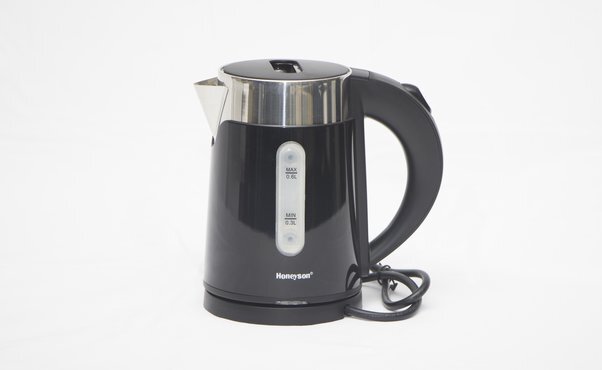
Unplug The Kettle:
However, if the kettle is left plugged in, there is not much danger. Because the current only passes in case the switch is on.
On the contrary, the latest study says that if things are left plugged in, they still use electricity. That’s why it is preferred to unplug the kettle after use.[6]
Also Read: Why Circuit Breaker Tripping When Using Kettle?
Conclusion:
I hope this article clears up all your confusion about keeping the kettle plugin. As no current flows in an open circuit. Therefore plugging in contains no safety concerns.
However many experts never allow you to plug in the appliance after use.
Suppose that you forget to turn off the switch along with the plug. You have to face serious results of this carelessness. Therefore, plugging out is as necessary as switching off.
New kettles have a feature that automatically shuts off at increased temperature. It saves them from overheating. Less overheating, fewer chances of catching fire.
FAQs:
Q: Should I unplug my kettle when not in use?
A: After using any electrical appliance, including a TV, charger, toaster, kettle, or other device, we should unplug and switch it off.
Q: Does unplugging the kettle save electricity?
A: This is the misconception that kettles use energy when plugged in but not in use. On the contrary, the reality is that the current never flows in the open circuit. So, no power is consumed.
Q: Is it dangerous to leave water in a kettle?
A: Leaving water in the kettle for a while might not create a big problem. But in case you constantly leave water in it, it can form a limescale layer. Limescale deteriorates the kettle’s material.
Q: Which plug is to be used for the kettle?
A: We attach a 3-pin mains plug with the cord for use with a 250 V a.c. supply and a 1 kW electric kettle.
Q: Does a plugged-in kettle use electricity but not in use?
A: If you do not turn on the switch after plugging in the electric kettle, it consumes no power. Current passes only in closed circuits. For this reason, it doesn’t use power in open circuits.
Q: Do all tea kettles have an automatic shut-off feature?
A: No, not all tea kettles come with an automatic shut-off feature. Some traditional stovetop kettles or basic electric models may require manual monitoring to prevent over-boiling.
Q: Is it safe to leave a tea kettle plugged in when not in use?
A: It is generally safer to unplug the tea kettle when not in use to minimize the risk of electrical accidents, overheating, or potential damage.
Q: Does leaving the tea kettle plugged in consume electricity even when not in use?
A: Yes, leaving the tea kettle plugged in consumes a small amount of standby power. Unplugging helps save energy and reduces your electricity consumption.
Q: Can leaving the tea kettle plugged in affect its lifespan?
A: Constantly leaving the kettle plugged in may contribute to wear and tear on the electrical components, potentially shortening its lifespan. Unplugging when not in use can help preserve the kettle.
Q: Are there any specific safety concerns associated with leaving a kettle plugged in overnight?
A: Leaving the kettle plugged in overnight poses risks of electrical issues or overheating. It is advisable to unplug appliances, including kettles, before going to bed.
Q: Should I unplug the kettle even if it has an automatic shut-off feature?
A: While automatic shut-off adds a layer of safety, it’s still recommended to unplug the kettle when not in use. This provides an extra measure of safety and helps conserve energy.
Q: Can leaving the kettle plugged in lead to accidents if it malfunctions?
A: Yes, if the kettle malfunctions or develops a fault, leaving it plugged in increases the risk of accidents. Unplugging when not in use is a precautionary measure.
Q: How does leaving the kettle plugged in affect safety during maintenance?
A: If you need to clean or perform maintenance on the kettle, unplugging ensures your safety by eliminating the risk of electrical shock or accidental activation.
Q: Are there specific guidelines for leaving an electric tea kettle plugged in?
A: It’s advisable to follow the manufacturer’s guidelines. As a general rule, unplugging the tea kettle when not in use is a safety-conscious practice.
Q: Can using a power strip with an on/off switch be an alternative to unplugging the kettle?
A: While using a power strip with an on/off switch provides a convenient way to disconnect power, it’s still recommended to unplug the tea kettle directly to ensure safety and energy conservation.
Q: How does leaving a tea kettle plugged in for extended periods impact its energy consumption and overall efficiency, and are there energy-saving practices users can adopt without compromising safety?
A: Explore the relationship between prolonged plug-in times and energy consumption in tea kettles, providing insights into efficient usage practices.
Q: Can the material and construction of the kettle’s heating element influence the safety considerations when leaving it plugged in, and are there specific features users should look for to ensure a safe heating element design?
A: Discuss how the material and design of the heating element may affect safety when the kettle is plugged in, offering guidance on features that enhance safety.
Article You Might Be Interested:
Is It Dangerous To Boil Water In A Plastic Electric Kettle?
Why Is My Kettle Making A Buzzing Sound?
Why Are Kettles Not Efficient?
Why Shouldn’t You Boil A Kettle When Empty?
Why Is My Kettle Making A High Pitched Noise?
Can I Put Cold Water In An Electric Water Kettle?
Does The Steel Body Of A Kettle Get Shocked?

